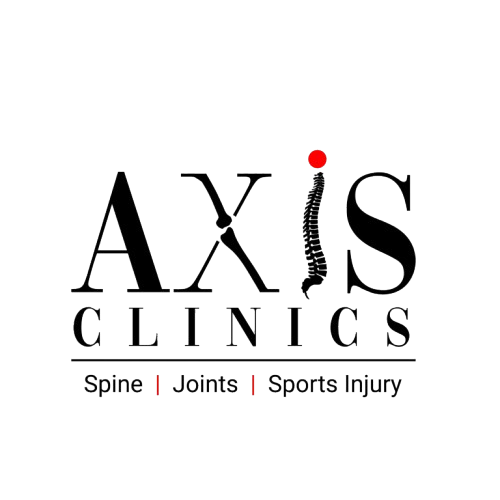Pain changes everything!
Whether it’s the dull ache in your knee that just won’t leave, that will flare up every time you want to do those squats, or the sharp sting from a sports injury; the slow grind of arthritis, or simply age-related persistent aches and pain; living with bone and joint problems is miserable.
Your options?
Conventionally it means medication, endless physiotherapy, or even joint replacement, meaning major surgeries. But are those your only options?
Well, here’s the good news: modern science now gives us a way to work with the body instead of cutting it open.
That’s what regenerative medicine in orthopedics does, with regenerative orthobiologics at its heart.
But what exactly do these terms mean?
Well, very simply put, this is helping your body heal itself. It is like tapping into your own body. Your body has a repair kit of its own, and it can use your cells, blood components, and tissues to restore the damaged catilage, ligaments, tendons, or bone.
Regenerative medicine doesn’t simply mask pain. Instead it focuses on the root cause. It nudges, triggers, and encourages your tissues to repair themselves. This means you have a real chance at long-term relief.
In other words, Regenerative treatments for bone and joint disorders means restored mobility, reduced pain, and delayed or even avoidable surgeries for you.
How does Regenerative Orthobiologics work?
Let’s put it this way. Our body has natural substances – stem cells, bone marrow, platlets, even tissue grafts – which boost healing. When they are applied appropriately, the body’s repair systems kick into gear. They are called orthobiologics.
When these orthobiologics are used to regenerate rather than just patch up or repair, it is called regenerative orthobiologics. This can give you multiple benefits like reduced inflammation, tissue rebuilding, and long-term health of your bones and joints.
Some of the common orthobiologics treatments include PRP (Platelet-Rich Plasma) therapy, stem cell therapy, Bone Marrow Aspirate Concentrate (BMAC), tissue grafts and scaffolds etc. But more about the details of them another time.
For now, let’s see why patients are turning to regenerative medicine.
- The first reason is simple. People no longer want just pain killers or a temporary fix. They want to get back to living. They want to heal. And they want to do is with minimal invasion, and as painlessly as possible.
- Another factor is that recovery in this case is faster than with traditional surgery.
- Regenerative medicine can delay or even avoid surgery in conditions like early arthritis.
- These treatments are personalised. Unique for each patient, using their own biology.
Who can benefit from Regenerative Orthobiologics?
Much unlike the myth, these treatments are not for just athletes or celebrities. They are for real people with real pain. Some of the kinds of patients that can benefit from these treatments are:
- Chronic joint pain sufferers: Especially those with arthritis in the knees, hips, or shoulders.
- Active adults and athletes: Faster recovery from sprains, tendon tears, or cartilage injuries.
- Older adults with degenerative conditions: Slowing down the wear and tear that comes with age.
- Patients avoiding surgery: For those who can’t—or don’t want to—go under the knife.
- People with slow-healing injuries: Fractures or tendon problems that haven’t healed properly with standard care.
Whether you’re an office worker, or a teacher who just wants to walk, stand, or teach without knee pain; or the runner desperate to get back on track, regenerative medicine is there to offer you respite and relief.
Some conditions treated with Regenerative Orthobiologics.
- Osteoarthritis (knee, hip, shoulder)
- Sports injuries (ligament and tendon tears)
- Chronic tendonitis (tennis elbow, Achilles)
- Meniscus injuries in the knee
- Degenerative disc disease and back pain
- Slow-healing bone fractures
How regenerative medicine actually helps.
It is equivalent to an upgrade in your natural, personal healing system. It helps in various ways which include but may not be limited to:
- Reducing inflammation and promoting new cartilage growth in joint pain.
- Speeding up recovery in sports injuries through PRP.
- Cell-based therapies strengthen bone and slow down damage in degenerative conditions.
At the risk of being repetitive, it is not about hiding your pain, or masking it. It is about helping your body heal and repair itself.
Let us be clear – This isn’t a magic wand! However, it is one of the most exciting new-age series of treatments in orthopedics right now. It has numerous possibilities and is bound to change the way we treat bone and joint problems.
By working with your body instead of against it, these treatments offer hope, healing, and a path to reclaiming your lifestyle—without always needing surgery.
Research continues, and results are promising so far. For many, these are already the best regenerative treatments for joint pain available today.
Written by Dr. Madhur Chadha – Senior Regenerative Medicine, Sports & MSK Pain Specialist


